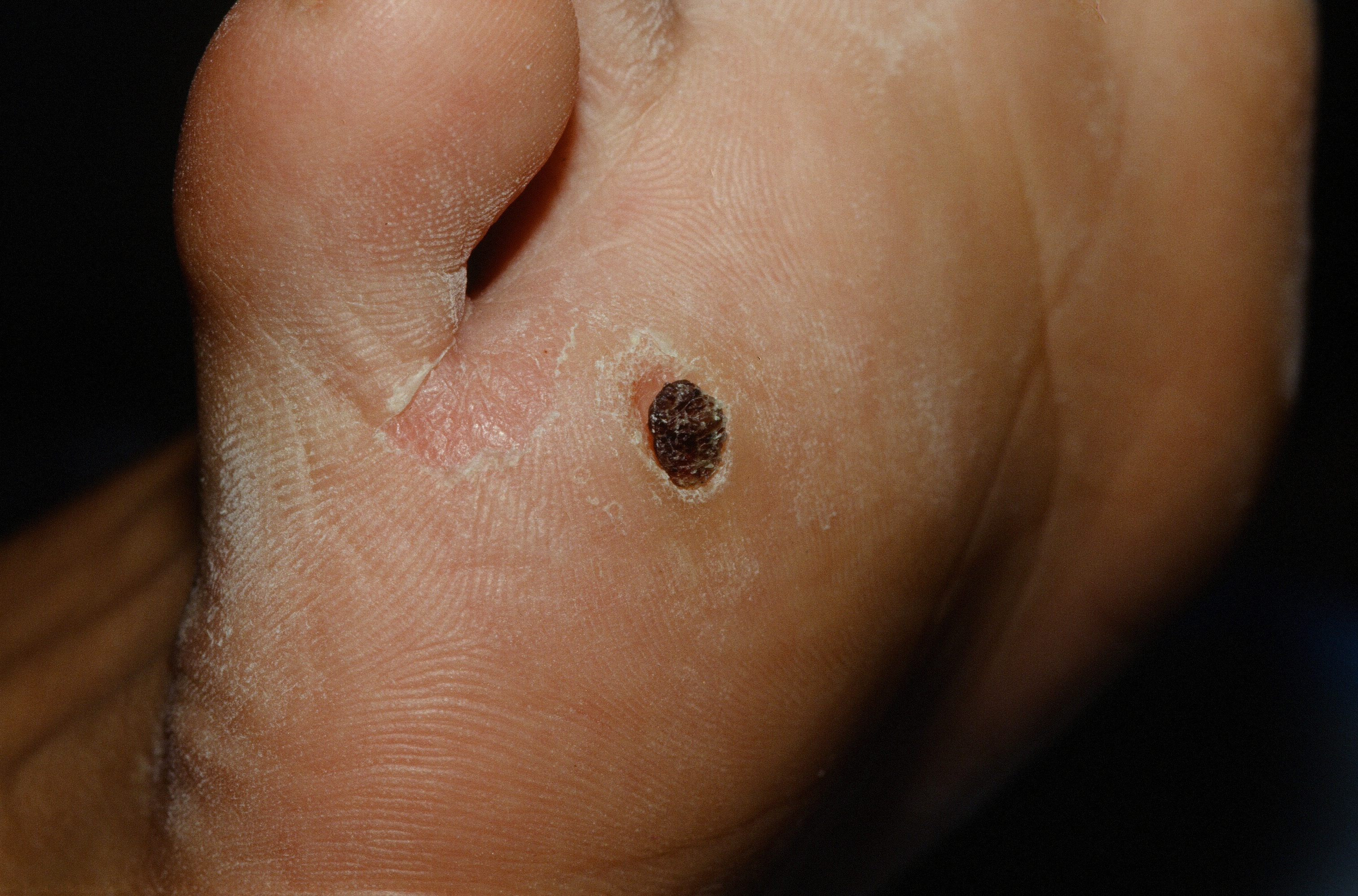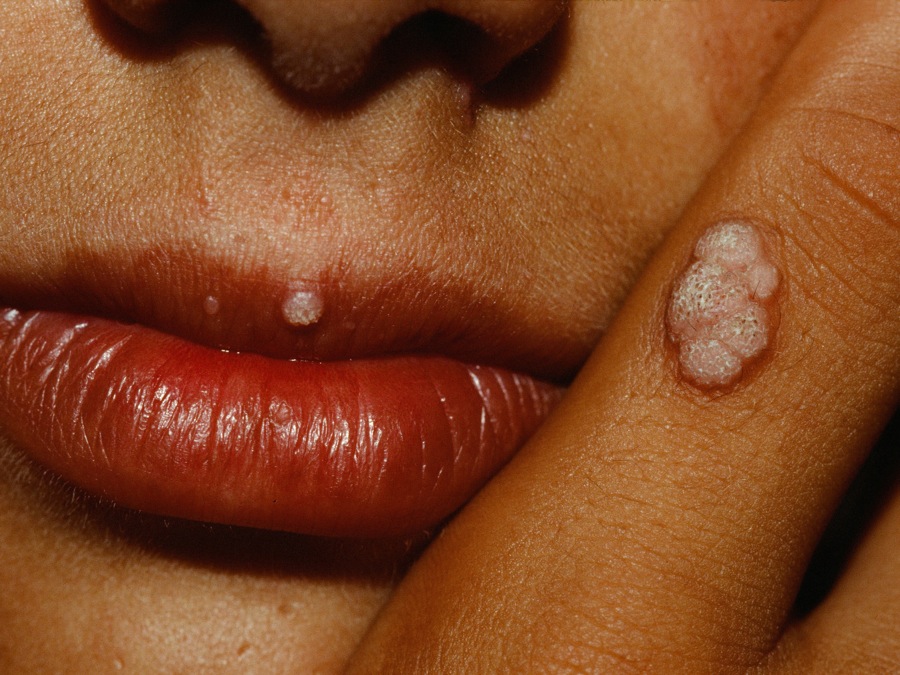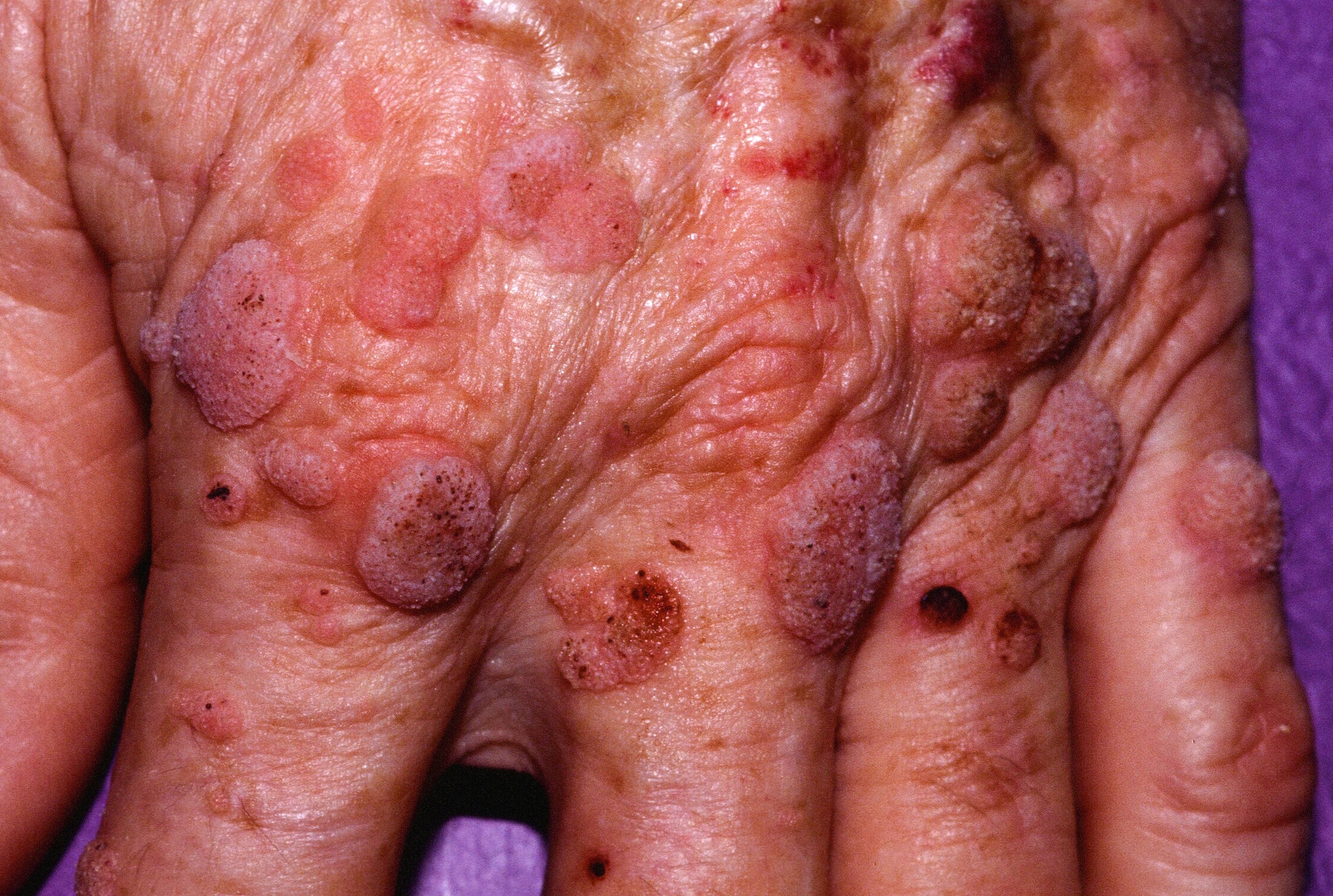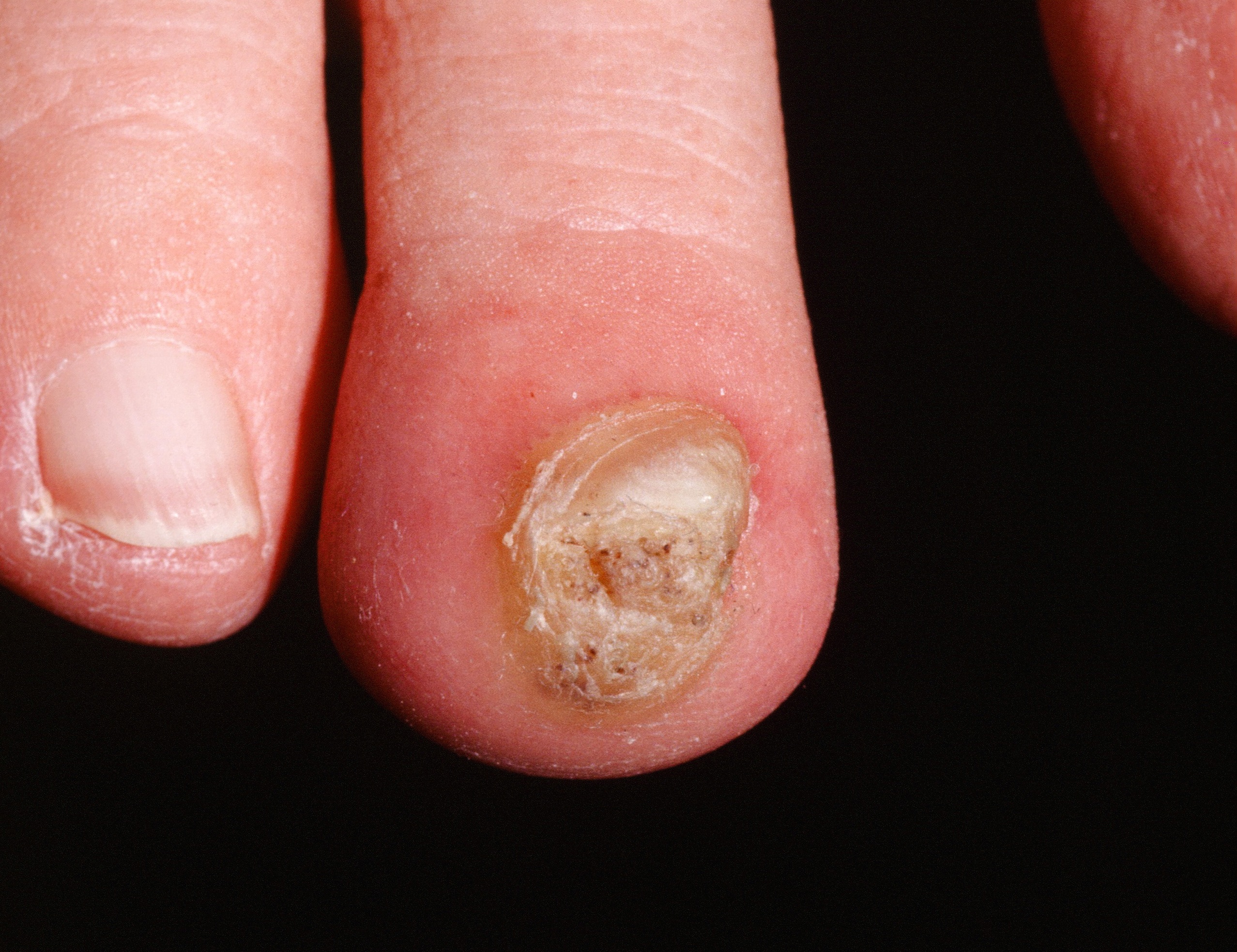
For decades, the black dots characteristically seen in warts were thought to be thrombosed capillaries. This has turned out not to be the case. They actually represent intracorneal hemorrhages. One should note that paring removes them before the dermis is reached.
VERRUCA VULGARIS (WARTS)
Warts or verrucae are skin lesions caused by infection by human papillomavirus (HPV).
- Left untreated, warts usually go away within 1-2 years.
- Warts are so successful because they "hide" from the immune system.
- They avoid expressing antigens on the surface of thier host keratinocyte until that keratinocyte has migrated above the immune cells in the epidermis.
- They reduce local Langerhans cells number and activity via the L2 protein on their surface.
- They mute the local immune response by secreting various proteins.
- See also flat warts.
Risk Factors
- Warts are most common in children. They are much less common after the age of 35.
- Risk factors include hands frequently in water, family members or friends with warts, swimming pools public showers and going barefoot.
- Hand warts in butchers are extremely common and is caused by HPV-7. The source of the HPV-7 is as of yet unknown.
Clinical
Warts come in many shapes and sizes. The most common is the hyperkeratotic, verrucous papule on the hands or feet of a child. Flat warts are slightly raised, flat papules or small plaques. Occasionally, they may resemble nevi. Many warts are exophytic (stick out), but lesions on the soles are usually endophytic (extend into the skin) because of the constant pressure. Warts commonly occur about the nails, especially in children who bite or pick their nails. Warts do not show fingerprints, in contrast to calluses.
Darker-skinned patients get warts less commonly which is fortunate given that cryotherapy easily induces white spots after therapy.
Differential Diagnosis
If located on the sole, be sure to confirm the diagnosis by paring. A wart has black dots; a corn has a clear center. Verrucous lesions that resist treatment should be biopsied. Occasionally a squamous cell carcinoma or even an amelanotic melanoma may be found. Subungual lesions in an adult should raise particular concern and prompt biopsy sooner rather than later to rule out squamous cell carcinoma).

When the immune system finally wins and kills the wart, it dries up, turns brown/black and falls off.

Warts may be spread through autoinnoculation.


A subungual wart. For longstanding lesions, especially in older patients, a biopsy to rule out squamous cell carcinoma may be in order.
RegionalDerm
Homepage | Who is Dr. White? | Privacy Policy | FAQs | Use of Images | Contact Dr. White
It is not the intention of RegionalDerm.com to provide specific medical advice, diagnosis or treatment. RegionalDerm.com only intends to provide users with information regarding various medical conditions for educational purposes and will not provide specific medical advice. Information on RegionalDerm.com is not intended as a substitute for seeking medical treatment and you should always seek the advice of a qualified healthcare provider for diagnosis and for answers to your individual questions. Information contained on RegionalDerm.com should never cause you to disregard professional medical advice or delay seeking treatment. If you live in the United States and believe you are having a medical emergency call 911 immediately.




